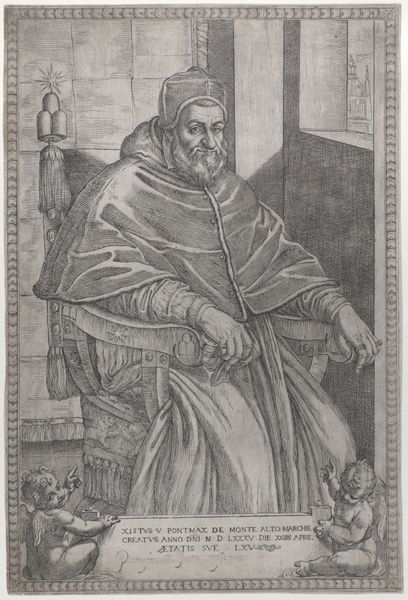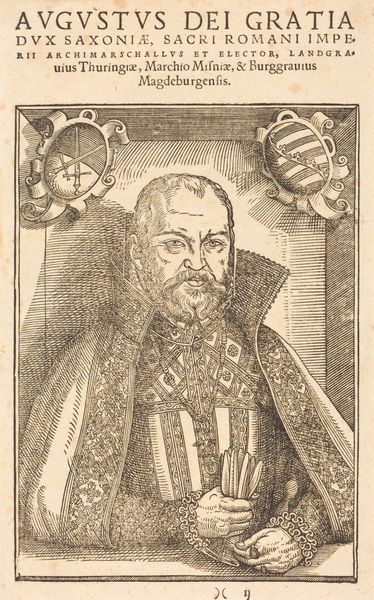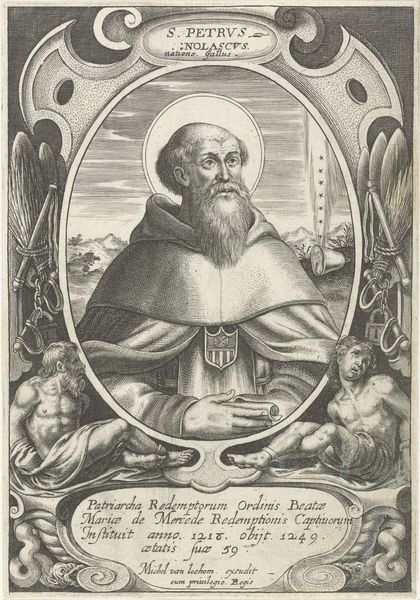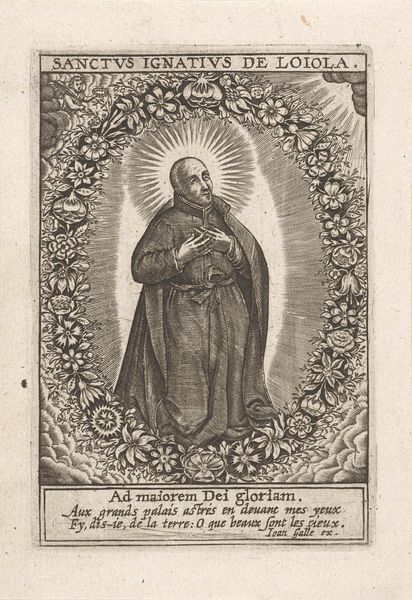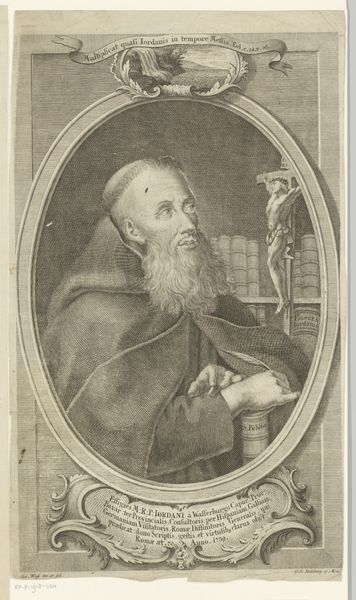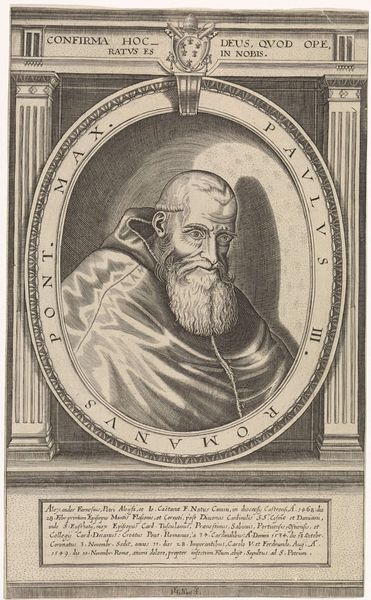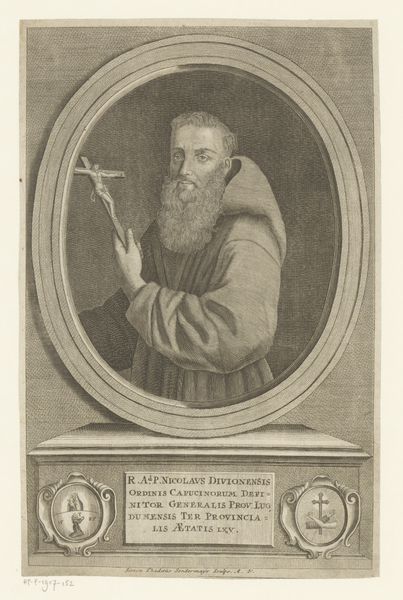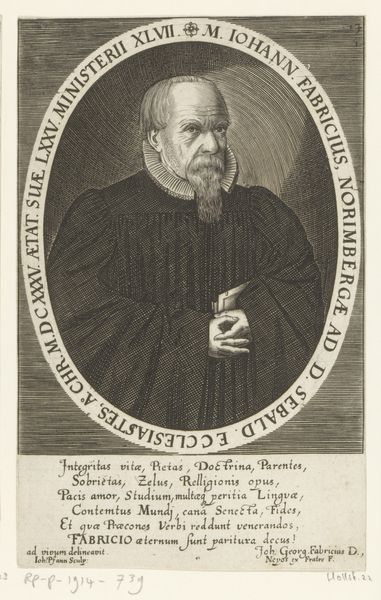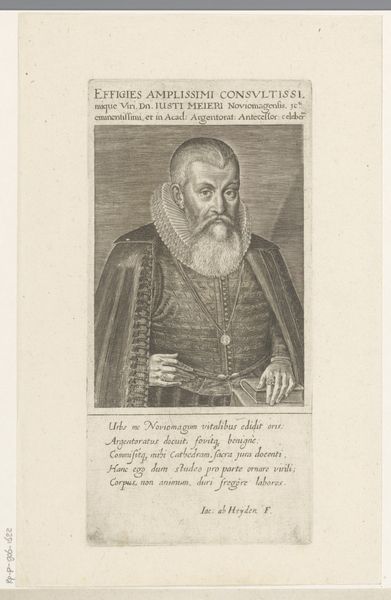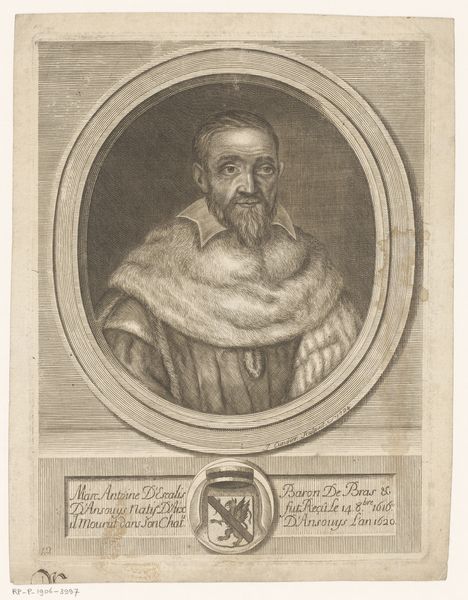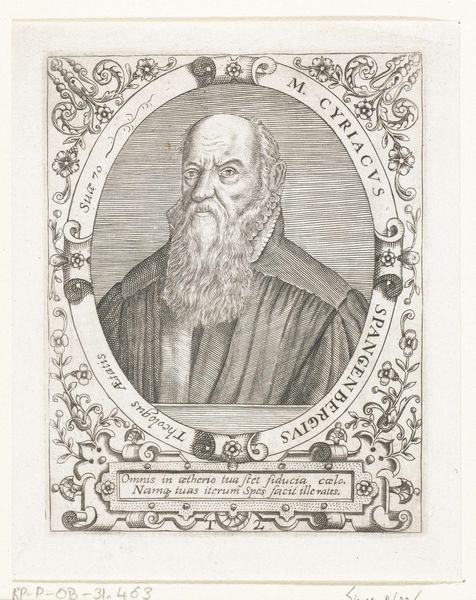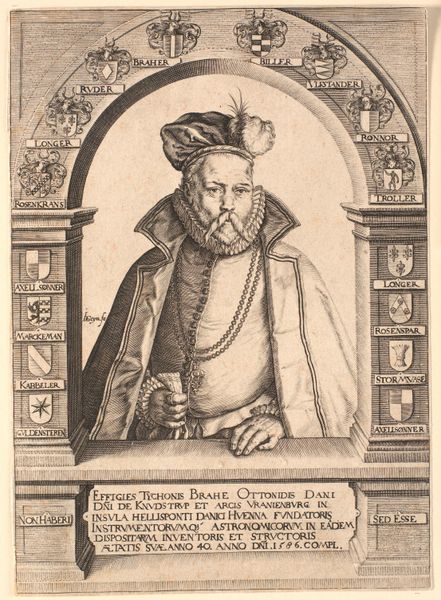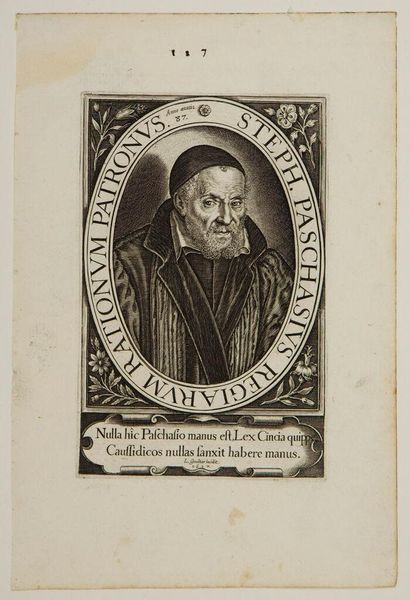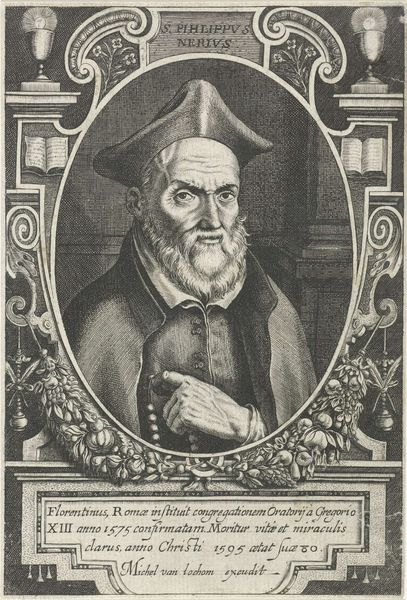
print, engraving
#
portrait
#
medieval
#
baroque
# print
#
old engraving style
#
pencil drawing
#
history-painting
#
engraving
Dimensions: height 172 mm, width 115 mm
Copyright: Rijks Museum: Open Domain
Curator: This portrait just breathes quietude, doesn't it? Something about the fine lines and the subject's serene gaze. Editor: It's Wilhelm Schwan's 1640 engraving, "Portret van David Zell". Notice the subject's garb and bearing – he's positioned within a complex visual language of religious and political authority. Curator: The oval frame decorated with a bishop's mitre and what seems like an abbot’s staff – and that very stern face – does convey a clear message of power and importance, right? Editor: Exactly. Zell, likely a significant religious figure, is deliberately presented as such. Look at the rosary beads in his hands – instruments of piety and status combined. The scene also include, to the right, a crucifix placed above an open book. The texts at the top and the bottom that complement the illustration help clarify who this man was. Curator: And those incredibly fine lines! It must have taken hours upon hours to create such intricate detail, particularly in the folds of his habit. Editor: It would've demanded immense patience and skill. Engraving was a meticulous, time-intensive process that required deep expertise and the ability to conceptualize the desired imagery on metal to allow the production of dozens if not hundreds of copies of this artwork, the goal would be to ensure widespread circulation of Zell's iconography. The quality of the print really elevated its propaganda potential. Curator: It’s fascinating to think about the role prints played then, mass-producing images that shaped public perception…a kind of baroque-era meme, almost. I also appreciate how the shelves lined with books contribute to this aura of quiet contemplation, hinting at David Zell’s erudition. What's interesting is how those few elements offer clues of who this man might be. Editor: Those kinds of symbols reinforce Zell's intellectual and spiritual credentials, while solidifying the Church’s position as a patron and preserver of knowledge during the Baroque period. It also is interesting to remember that it was often wealthy members of society that could buy the materials necessary to develop the illustrations, and even pay the illustrators. Curator: Looking at it again, it's as if Schwan didn’t just engrave an image, but encapsulated an entire philosophy. Editor: In effect, this engraving testifies to the careful crafting of a public persona, which aimed at influencing views during a highly charged moment in history, by solidifying the image and character of such personalities as models for a society that would benefit from its virtues. Curator: Indeed. It’s a vivid reminder that even the quietest image can have profound resonance.
Comments
No comments
Be the first to comment and join the conversation on the ultimate creative platform.
